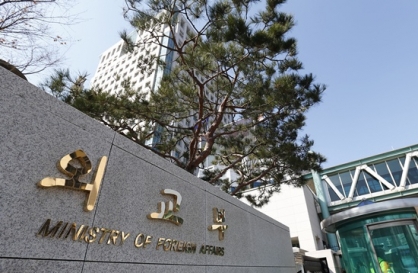ABOARD THE USS GEORGE H.W. BUSH (AP) ― The Navy successfully landed a drone the size of a fighter jet aboard an aircraft carrier for the first time Wednesday, showcasing the military’s capability to have a computer program perform one of the most difficult tasks that a pilot is asked to do.
The landing of the X-47B experimental aircraft means the Navy can move forward with its plans to develop another unmanned aircraft that will join the fleet alongside traditional airplanes to provide around-the-clock surveillance while also possessing a strike capability. It also would pave the way for the U.S. to launch unmanned aircraft without the need to obtain permission from other countries to use their bases.
“It is not often that you get a chance to see the future, but that’s what we got to do today. This is an amazing day for aviation in general and for naval aviation in particular,” Navy Secretary Ray Mabus said after watching the landing.
The X-47B experimental aircraft took off from Naval Air Station Patuxent River in Maryland before approaching the USS George H.W. Bush, which was operating off the coast of Virginia. The tail-less drone landed by deploying a hook that caught a wire aboard the ship and brought it to a quick stop, just like normal fighter jets do. The maneuver is known as an arrested landing and had previously only been done by the drone on land at Patuxent River. Landing on a ship that is constantly moving while navigating through turbulent air behind the aircraft carrier is seen as a more difficult maneuver, even on a clear day with low winds like Wednesday.
The landing of the X-47B experimental aircraft means the Navy can move forward with its plans to develop another unmanned aircraft that will join the fleet alongside traditional airplanes to provide around-the-clock surveillance while also possessing a strike capability. It also would pave the way for the U.S. to launch unmanned aircraft without the need to obtain permission from other countries to use their bases.
“It is not often that you get a chance to see the future, but that’s what we got to do today. This is an amazing day for aviation in general and for naval aviation in particular,” Navy Secretary Ray Mabus said after watching the landing.
The X-47B experimental aircraft took off from Naval Air Station Patuxent River in Maryland before approaching the USS George H.W. Bush, which was operating off the coast of Virginia. The tail-less drone landed by deploying a hook that caught a wire aboard the ship and brought it to a quick stop, just like normal fighter jets do. The maneuver is known as an arrested landing and had previously only been done by the drone on land at Patuxent River. Landing on a ship that is constantly moving while navigating through turbulent air behind the aircraft carrier is seen as a more difficult maneuver, even on a clear day with low winds like Wednesday.

Rear Adm. Mat Winter, the Navy’s program executive officer for unmanned aviation and strike weapons, said everything about the flight ― including where on the flight deck the plane would first touch and how many feet its hook would bounce ― appeared to go exactly as planned.
“This is a historic day. This is a banner day. This is a red-flag letter day,” Winter said. “You can call it what you want, but the fact of the matter is that you just observed history ― history that your great-grandchildren, my great grandchildren, everybody’s great grandchildren are going to be reading in our history books.”
Less than an hour after that first landing, the jet took off from the carrier and then landed again. On its third and last-planned landing attempt, the Navy said, the jet self-detected a navigation computer anomaly. Instead of landing on the carrier, it flew to Wallops Island Air Field on the Eastern Shore of Virginia. The Navy says the plane landed safely there.
The Navy will do some additional tests and analysis on the jet, and possibly some more landings in the next few days if the carrier’s schedule allows for it, but the first landing was the last major benchmark for the program to hit.
The X-47B will never be put into operational use, but it will help Navy officials develop future carrier-based drones. Those drones could begin operating by 2020, according to Winter.
-
Articles by Korea Herald




![[Weekender] Korean psyche untangled: Musok](http://res.heraldm.com/phpwas/restmb_idxmake.php?idx=644&simg=/content/image/2024/05/02/20240502050841_0.jpg&u=)

![[Eye Interview] 'If you live to 100, you might as well be happy,' says 88-year-old bestselling essayist](http://res.heraldm.com/phpwas/restmb_idxmake.php?idx=644&simg=/content/image/2024/05/03/20240503050674_0.jpg&u=)











![[Herald Interview] Director of 'Goodbye Earth' aimed to ask how we would face apocalypse](http://res.heraldm.com/phpwas/restmb_idxmake.php?idx=652&simg=/content/image/2024/05/03/20240503050732_0.jpg&u=)
